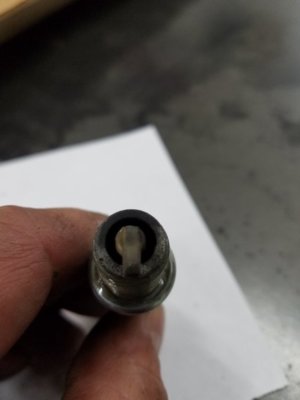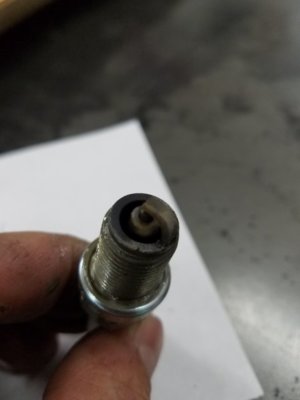it seems to be human nature to dislike what you don't understand. anybody who denies the benefits of a vacuum advance on a street car has not seriously worked with them. this head in the box stuff. the only time I can think of to not use a vacuum advance on a street car is if the vacuum is so low it's impossible to use it; and with the units being able to be adjusted down to a low vacuum it makes not trying silly. your 8.5'" of vacuum is not indicative of ported vacuum. do a simple test and hook a vacuum gauge to the ported a nipple, take a drive, and see what it does. if that doesn't satisfy you then hook the vacuum gauge to manifold vacuum and see what that does. this is too easy!
as far as Don wanting you to use manifold vacuum I disagree with that. Don had an article on this website from a GM engineer saying some stuff about ported being strictly for emissions, IIRC. I looked at some older pre-emissions carb info and they all used ported, or at least the info I have does. I limited my comments about this due strictly for my respect for Don. I buy his stuff; 'nuff said.
if you don't try something else then you'll never solve issues. these mopar websites can be a blessing or a curse and firmly believe they are a curse more often than not.
I agree with you that vacuum advance should help, but Brian got me nervous about running it on his motor. His reasoning is that you can't always hear the detonation, the advance varies by rpm and load, and vacuum advance was developed only for smog engines when the government was forcing the manufactures to comply with their new emission standards. Not for these higher horsepower motors we are driving.
This 451 in my RR that I am inquiring about in this thread runs fine with the vac hooked up to ported, and I will hook it back up again after getting all this tuning figured out. The problem with hooking this motor to manifold is that the lowest start point on any can made is right around 8". It will start great and then advance to a mid to high 20's. As soon as you put the car in gear and let out the clutch, it hangs up and pulls the idle speed up with it. If you unhook the can it will drop right back to a nice idle.
On the other hand, my Charger with a milder cam with 12" of vac at idle works great hooked up to manifold. Starts at 16*, goes to 24* at idle, and runs strong.
I have hooked a vacuum gauge up in the cabin and drove around recording what the vacuum does in all situations.
As far as Don, I do like his control boxes and use them on all my cars. His distributors, not so much. I can curve them to my cars better than he can on a machine trying to guess what they need. He does have some very strong opinions though and lets you know them.
I am learning more and more about tuning these cars everyday, and enjoying it immensely. Sure wish you or someone with your knowledge lived near me to steer me in the right direction sometimes though....




















